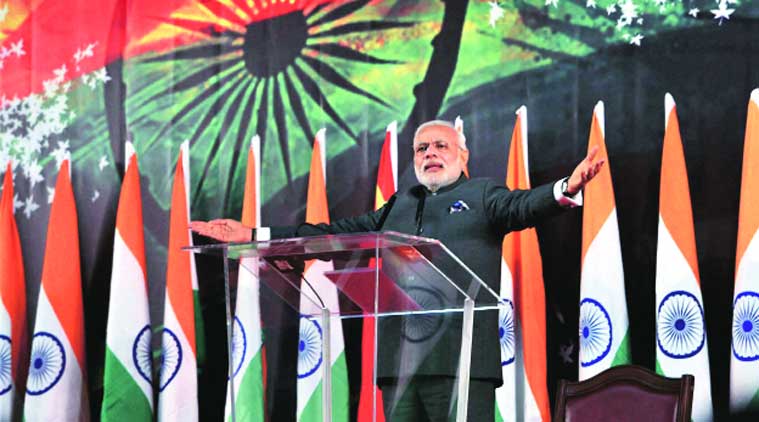An unusually hectic travel schedule this summer took me to four great cities in four weeks: London, Chicago, Dubai and Beijing. In each, I learned about at least one interesting organization. In London, I added to my knowledge about Unilever, the well-known consumer goods giant whose products range from soaps and shampoos to ice creams and soups, when I met the head of a unit called Unilever Foundry that engages with startups. In Chicago, I attended a Father’s Day event at Willow Creek, a non-denominational megachurch that averages over 25,000 attendees every weekend. In Dubai, I learned about Aramex, a company sometimes referred to as “the FedEx of the Middle East”, whose Chairman Fadi Ghandour was the recipient of the 2017 Academy of International Business (AIB) Executive of the Year award. Finally, in Beijing, I visited the Nasdaq-listed JD.com, China’s first internet company to be featured in the Fortune 500.
Four very disparate organizations, but all with an unexpected common thread that became quickly apparent to me in each case: entrepreneurial behavior. As a relatively young e-commerce retailer, JD.com was probably the most “obvious” candidate for being entrepreneurial – and from the various displays at its futuristic exhibition center it wasn’t difficult to perceive that the company was in no mood to rest on its laurels. But the hunger to stay relevant was evident at the other organizations as well. In the case of Unilever, it had quite deliberately stepped outside of its comfort zone to engage with non-traditional allies, specifically startups, in the pursuit of novel ideas and innovative solutions. In relation to Willow Creek Church, it had clearly added creative elements into its activities, borrowing from a very different template – showbiz – to infuse its worship services with a greater experiential appeal. And as for Aramex, here was a courier company that had fearlessly pursued opportunities in a volatile region which held little appeal (when it was created in the 1980s) to large international players.
Why do I describe these companies as entrepreneurial? Arguably, Unilever’s behavior can be described as proactive in that it took the initiative to add a new dimension to its partnering activities: working with startups. Willow Creek’s actions can be termed as being innovative in that, in order to enhance their efficacy, novel ideas were creatively incorporated into what some would view as boring activities. Aramex had demonstrated a propensity for risk-taking. Academics refer to these features – proactiveness, innovativeness and risk-taking – as dimensions of “entrepreneurial orientation”. Numerous studies suggest that higher levels of these specific characteristics in organizations yield better results and, as JD.com is clearly striving for, continuous strategic renewal. The important message here, then, is that being entrepreneurial isn’t just for startups in high-tech sectors; it is as relevant to large corporations like Unilever, non-profits like Willow Creek and firms in traditional industries like Aramex.
So what does it take for an organization to be entrepreneurial? Here are three lessons:
1. Recognize that it is a collective effort. It was evident to me that in all four cases, the leader at the very top was providing clear messages to organizational members, calling for creativity and dynamism. But that was not all. These organizations seemed to also have “middle managers” who had bought into the need to stay hungry, and they all implicitly or explicitly emphasized the need for attracting and retaining talent. Thus, while leaders matter, it’s not just about them. Everyone in the organization has a part to play.
2. Draw inspiration from your local environment. While there are broad similarities between these four organizations, the specifics in terms of being entrepreneurial perhaps reflect some inherently local characteristics. For instance, Unilever Foundry struck me as very global in its ethos and ambitions – not unlike London, the city in which it is headquartered. Willow Creek had “creative directors” on its staff whose passion for pushing the envelope reflected the creative edginess for which Chicago is known. Aramex’s resilience was congruent with that of Dubai’s. JD.com’s scale of ambition echoed that of Beijing’s.
3. Learn to be comfortable with contradictory ideas. All four organizations were addressing tensions. To illustrate, Unilever was exploiting its own assets (brands) and exploring new ideas via outsiders (startups). Aramex had to remain locally relevant to its core Middle Eastern base, yet also be international in its mindset and reach. Willow Creek was holding on to both the traditional and the modern. JD.com seemed focused not only on short-term competitive challenges but also on long-term strategic imperatives.
Clearly, none of these lessons is easy to put into practice. Being entrepreneurial is effortful, not effortless. It is unlikely that these organizations, or any others, always get it right. The key, however, is to strive continually.


 Becoming visible
Becoming visible